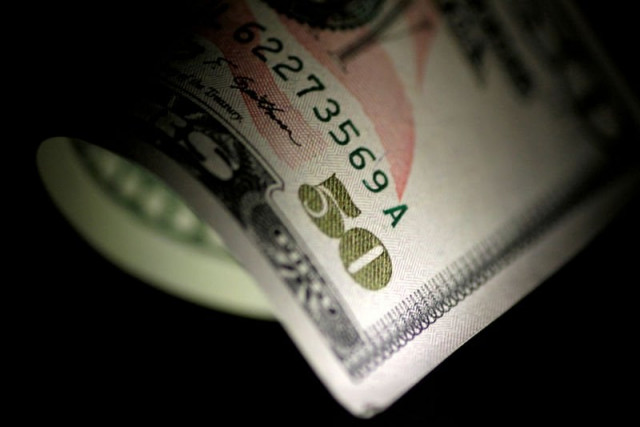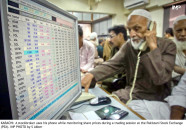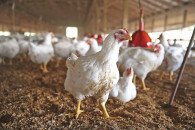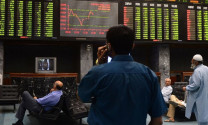Pakistan expects $2b foreign investment in debt schemes
Pakistan receives $328m investment in T-bills, other debt instruments in Jul-Sept

A US Dollar note is seen in this Reuters illustration photo.
The country received a net foreign investment of $328 million in debt instruments, mostly in three-month treasury bills, in the first three months (July-September) of the current fiscal year 2019-20, BMA Research said while quoting central bank’s data in a report.
“Our research house wouldn’t be surprised if up to $2 billion is mobilised on this front during the current fiscal year which will end on June 30, 2020,” BMA Research Executive Director Saad Hashmi said while talking to The Express Tribune.
Similarly, Egypt attracted significant flows after approval of the International Monetary Fund (IMF) loan programme in November 2016. Portfolio inflows swelled to $16 billion (including $10 billion alone in debt instruments) on the back of foreign investment in 2017.
The country recorded an outflow of $1 billion in 2016. “Even now, Egypt continues to be lauded as a key destination for carrying trades (foreign investment in debt instruments),” he said.
Last time, it was in May 2017 when foreign investors bought debt instruments in Pakistan. Since then, they invested nothing till June 30, 2019, according to the State Bank of Pakistan (SBP).
Foreigners did not invest in the instruments for two years from June 2017 to June 2019 because of high volatility and instability in the rupee-dollar parity, which strongly discouraged them.
The authorities let the rupee depreciate 52% from December 2017 to Rs160.05 against the US dollar on June 30, 2019.
The rupee has remained largely stable since July 1. Improvement in foreign currency reserves allowed the rupee to recover 2.43% to Rs156.36 on Monday (October 1) compared to Rs160.05 on June 30.
“Earlier, high volatility and instability in the rupee-dollar exchange rate was the main concern of foreign investors. And the end of volatility and return of stability since July 1 has encouraged foreigners to invest in treasury bills, which are offering a high rate of return of around 13-14% per annum,” Hashmi said.
More importantly, the high benchmark interest rate, which stands at an eight-year high at 13.25%, encouraged foreigners to make an investment in the debt instrument as the interest rate stood low in the home countries of investors, who mostly came from the developed world, he said.
Pakistan has attracted investment from two leading developed countries - the US and UK. “Most of the fund managers dealing with global investors are based in these two countries,” he pointed out.
The improvement in Pakistan’s foreign currency reserves also assured investors that they would be able to pull out their investment whenever they wanted. Foreigners are believed to continue investing in these instruments until the interest rate remains high.
The new investment flow is expected to further support the country’s foreign currency reserves.
Moreover, Islamabad had formally entered a 39-month IMF loan programme in July when the institution released the first tranche of $991.4 million out of the total loan of $6 billion.
“The IMF programme is another reason why foreign investors have returned to Pakistan. Foreigners feel comfortable in investing in the countries running under IMF programmes,” he said.
“The State Bank may keep the interest rate high in order to encourage foreign investors to prolong their investment in Pakistan,” he said. “Authorities concerned should not depend on this investment for maintaining high foreign currency reserves for a longer period,” he suggested. “They should now come into action to attract foreign direct investment (FDIs) to improve and stabilise the reserves.”
Moreover, there was a great need to increase exports which held the key to achieving sustainable economic development, he said.
Published in The Express Tribune, October 2nd, 2019.
Like Business on Facebook, follow @TribuneBiz on Twitter to stay informed and join in the conversation.



















COMMENTS
Comments are moderated and generally will be posted if they are on-topic and not abusive.
For more information, please see our Comments FAQ